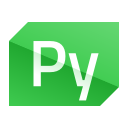QVBoxLayout¶
The
QVBoxLayoutclass lines up widgets vertically. More…

Detailed Description¶
This class is used to construct vertical box layout objects. See
QBoxLayoutfor details.The simplest use of the class is like this:
window = QWidget() button1 = QPushButton("One") button2 = QPushButton("Two") button3 = QPushButton("Three") button4 = QPushButton("Four") button5 = QPushButton("Five") layout = QVBoxLayout() layout.addWidget(button1) layout.addWidget(button2) layout.addWidget(button3) layout.addWidget(button4) layout.addWidget(button5) window.setLayout(layout) window.show()First, we create the widgets we want to add to the layout. Then, we create the
QVBoxLayoutobject, settingwindowas parent by passing it in the constructor; next we add the widgets to the layout.windowwill be the parent of the widgets that are added to the layout.If you don’t pass a parent
windowto the constructor, you can at a later point usesetLayout()to install theQVBoxLayoutobject ontowindow. At that point, the widgets in the layout are reparented to havewindowas their parent.
- class PySide2.QtWidgets.QVBoxLayout¶
PySide2.QtWidgets.QVBoxLayout(parent)
- param parent:
Constructs a new vertical box. You must add it to another layout.
Constructs a new top-level vertical box with parent
parent.The layout is set directly as the top-level layout for
parent. There can be only one top-level layout for a widget. It is returned bylayout().See also
© 2022 The Qt Company Ltd. Documentation contributions included herein are the copyrights of their respective owners. The documentation provided herein is licensed under the terms of the GNU Free Documentation License version 1.3 as published by the Free Software Foundation. Qt and respective logos are trademarks of The Qt Company Ltd. in Finland and/or other countries worldwide. All other trademarks are property of their respective owners.
